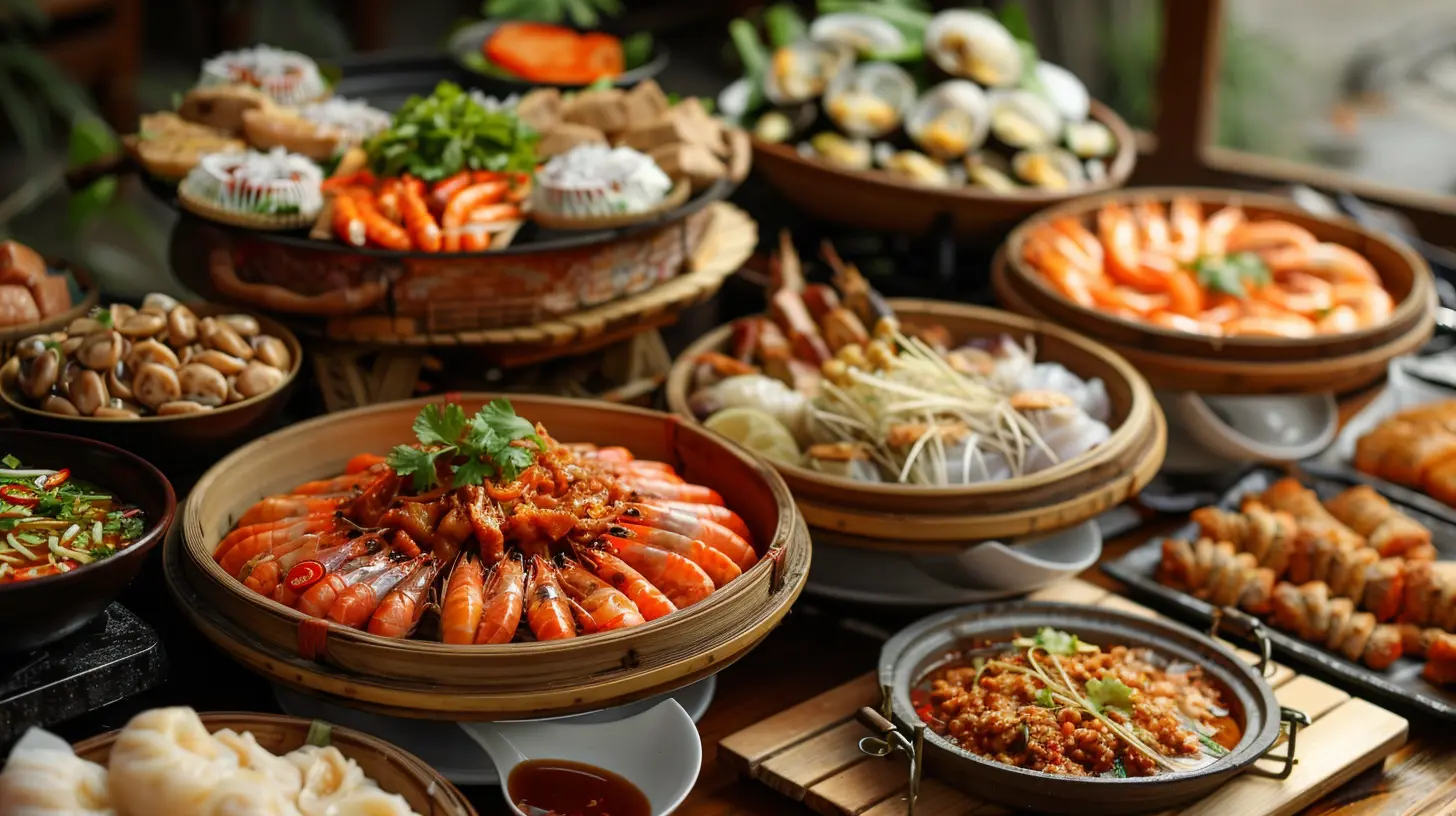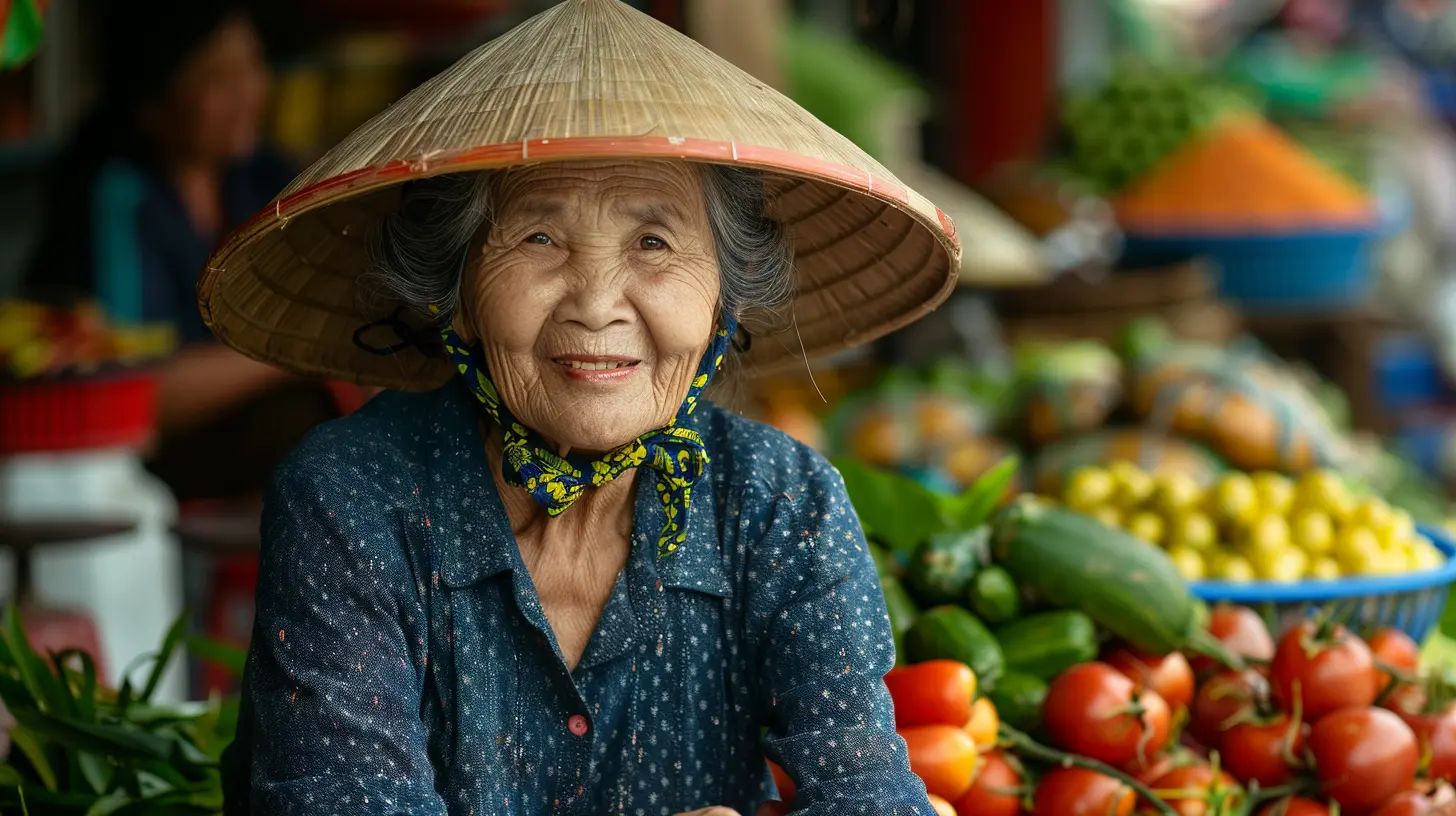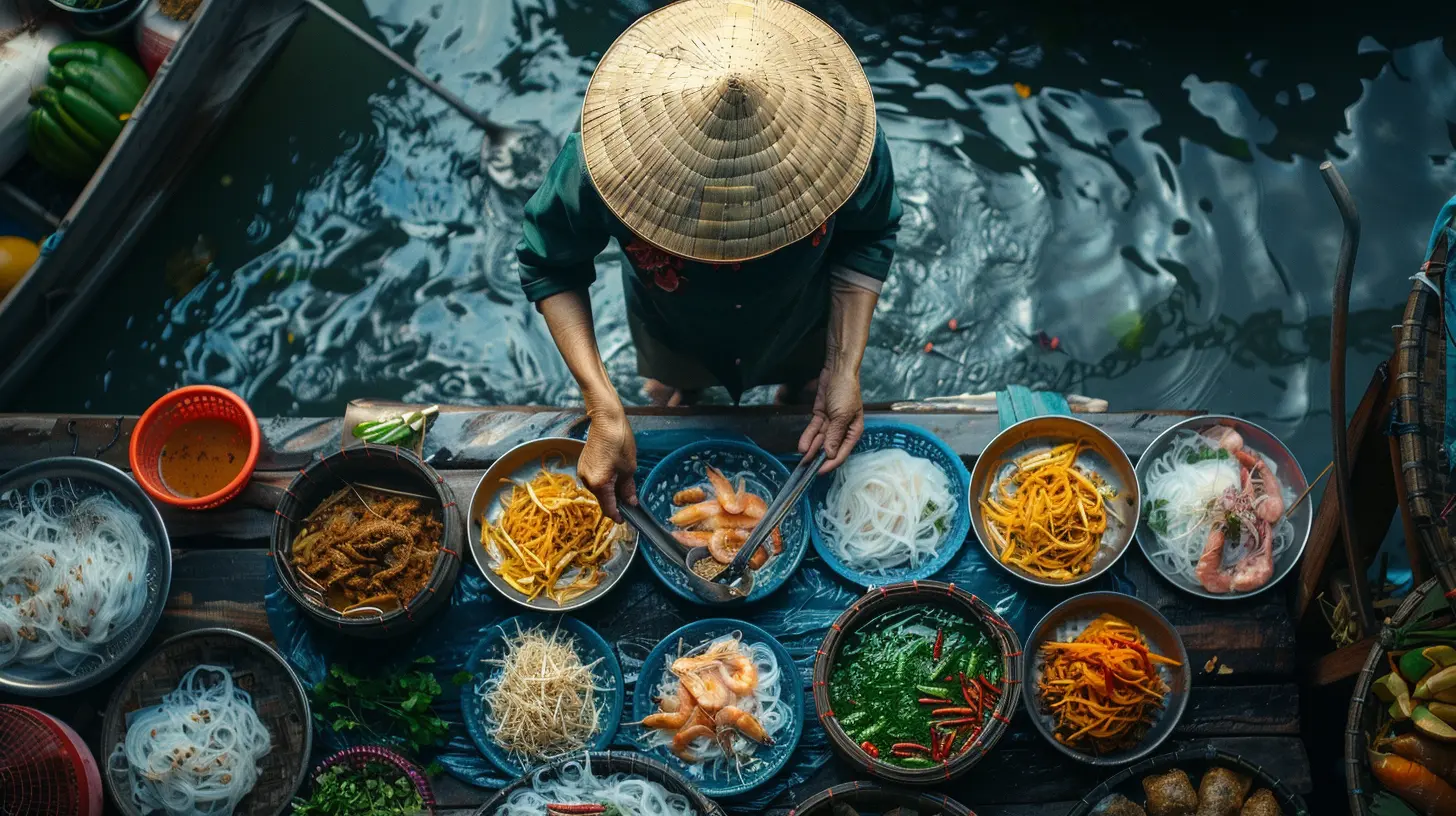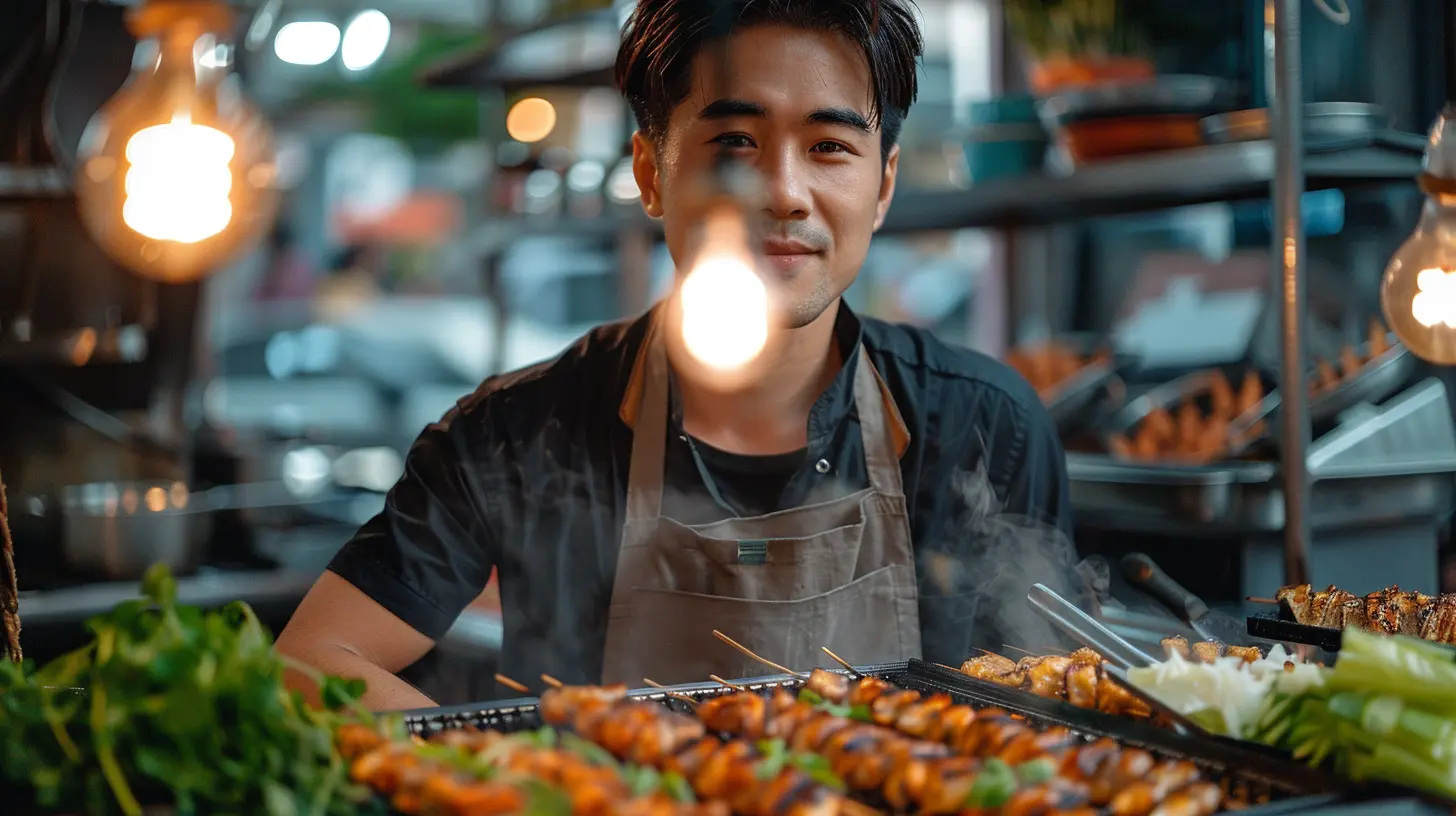An In-Depth Look at Traditional Vietnamese Cuisine
1 September 2025
If your taste buds are craving something fresh, flavorful, and downright soul-satisfying, Vietnamese cuisine might just be your next obsession. From steamy noodle soups to crispy pancakes and fragrant herbs, Vietnam’s culinary scene is incredibly diverse, and every bite tells a story. Whether you’re planning a trip to Vietnam, or you're just a passionate foodie with a love for Southeast Asian flavors, buckle up — we’re diving deep into what makes traditional Vietnamese cuisine so special.
What Makes Vietnamese Cuisine So Unique?
Let’s start with a simple truth: Vietnamese food is all about balance. Every dish dances between five key elements — sweet, salty, sour, bitter, and umami — creating a harmonious experience for your palate. Ingredients are fresh, herbs are abundant, and preparation methods often keep things light and healthy.Add to that a rich history influenced by Chinese, French, and even Indian cuisine, and you’ve got a food culture that’s as vibrant as the country itself.
The Core Ingredients of Vietnamese Cooking
Before we feast on iconic dishes, let’s peek at the key players in the Vietnamese pantry.1. Fish Sauce (Nước Mắm)
This might be the single most essential ingredient in Vietnamese cooking. Made from fermented anchovies, it adds depth and umami like no other. You’ll find fish sauce in everything from dipping sauces to marinades and broths.2. Rice — The Heartbeat of Vietnamese Meals
Vietnam is one of the world’s largest rice producers, so it's no surprise that rice is a staple. Steamed rice, rice noodles, rice paper, and rice flour — it’s extremely versatile and forms the base of many dishes.3. Fresh Herbs
Mint, coriander, Thai basil, perilla, and lemongrass are used with such frequency that you’ll start recognizing their fragrance as a comforting sign of a meal to come.4. Vegetables
Vietnamese cuisine celebrates vegetables — whether raw, pickled, stir-fried, or wrapped into spring rolls. Think crunchy bean sprouts, fresh lettuce, cucumber slices, and pickled daikon.5. Chili and Lime
These two bring the spice and zest. A squeeze of lime and a chopped chili can completely transform a dish, giving it that kick you didn’t know it needed.
Iconic Traditional Vietnamese Dishes You Absolutely Need to Try
Okay, now that we know what goes into the pot, let’s talk about what comes out of it.1. Phở — Vietnam's Beloved Bowl of Comfort
Phở (pronounced "fuh") might be Vietnam’s most famous culinary export — and for good reason. It’s a fragrant noodle soup made with a slow-cooked broth (typically beef or chicken), flat rice noodles, and a mountain of herbs on top.Want to impress a local? Order phở for breakfast. Yes, breakfast! That’s when locals believe it’s freshest.
2. Bánh Mì — The Ultimate Fusion Sandwich
Take a crunchy French baguette, fill it with savory grilled pork or pâté, pickled vegetables, chili, cucumber, and cilantro — and boom, you’ve got a bánh mì.It’s quick, cheap, satisfying, and loaded with texture. Basically, it's Vietnam’s version of fast food, but way tastier (and arguably healthier).
3. Gỏi Cuốn — Fresh Spring Rolls
These translucent rice paper rolls are the lighter cousin of fried spring rolls. Usually stuffed with shrimp, pork, noodles, and herbs, they’re dipped in a hoisin-peanut sauce that’s the real MVP.If you’re into fresh, clean flavors, you’ll fall in love fast.
4. Bún Chả — Smoky, Grilled Goodness
Ever heard of the dish Anthony Bourdain shared with Barack Obama in Hanoi? Yup, that was bún chả. It features grilled pork meatballs served in a bowl of slightly sweet broth with noodles and herbs on the side.Pro tip: All the elements come separately, so you kinda build each bite yourself. It's a delicious DIY experience.
5. Cao Lầu — A Taste of Hoi An
Unique to the ancient town of Hoi An, this dish features thick noodles, crispy pork, fresh greens, and crunchy crouton-like toppings. The twist? The noodles are soaked in lye water drawn from a local well, giving them a distinctive chewy texture.You’ll only find authentic cao lầu in Hoi An — so make the trip, it’s worth it.
6. Bánh Xèo — The Vietnamese "Sizzling Pancake"
This giant, crispy rice flour pancake is filled with shrimp, pork, bean sprouts, and herbs. You break it up, wrap it in lettuce or rice paper, dip it in fish sauce, and devour.The name literally means "sizzling cake," thanks to that satisfying sound it makes when the batter hits the hot pan.
Regional Varieties: Taste Your Way Through Vietnam
Vietnam stretches over 1,000 miles from north to south — and the food shifts every step of the way.Northern Vietnam: Subtle and Traditional
In Hanoi and the surrounding areas, the food is simpler and less spicy. You’ll see classic dishes like phở and bún thang (a delicate noodle soup), where the natural flavor of ingredients shines through.Central Vietnam: Spicy and Bold
The central region, especially around Huế, is known for its royal cuisine and bold flavors. Expect chili heat, complex broths, and lots of intricate small plates like bánh bèo — steamed rice cakes topped with dried shrimp and crispy shallots.Southern Vietnam: Sweet and Herb-Filled
Down in Saigon (Ho Chi Minh City), the food gets sweeter and more herbaceous. Coconut milk makes frequent appearances, and dishes like cơm tấm (broken rice) and hủ tiếu (a clear noodle soup) are local favorites. Street food culture also thrives here, with lively night markets and snack stalls everywhere.Vietnamese Dining Culture: It’s All About Sharing
Forget the concept of "my dish, your dish." Vietnamese meals are meant to be shared. Dishes are served at the center of the table, and everyone digs in. It’s communal, friendly, and honestly, way more fun.You’ll also notice that utensils vary. Chopsticks are common, but you’ll also use a spoon for broth and a small dipping bowl for sauces. Oh, and don’t be surprised to see folks sitting on tiny plastic stools on the street — that’s where the best food often hides.
Vegetarian and Vegan Options? Absolutely
Good news if you’re plant-based: Vietnamese cuisine offers tons of vegan and vegetarian options, thanks to a strong Buddhist influence. Dishes like cơm chay (vegetarian rice dishes), phở chay (vegetarian phở), and tofu-based stir-fries are widely available, especially near temples or in larger cities.The Art of Vietnamese Street Food
If you're visiting Vietnam and skipping the street food, you’re missing out on half the experience. Street vendors are often masters of a single dish, perfecting it over decades. The flavors are bold, the ingredients fresh, and the prices unbeatable.Ever tried sipping sugarcane juice on a hot afternoon or munching on a grilled banana sticky rice cake at midnight? Now that’s what memories are made of.
Final Thoughts: Vietnamese Food Is a Journey
Traditional Vietnamese cuisine isn’t just about eating — it’s about discovering bits of history, savoring regional differences, and connecting with the culture in the most delicious way possible. From sipping a bowl of steaming phở in Hanoi to devouring a bánh mì by the roadside in Saigon, every meal tells a story.It’s healthy, flavorful, and full of soul. Whether you’re a seasoned traveler or a curious foodie, Vietnamese cuisine is a journey worth taking, bite by bite.
all images in this post were generated using AI tools
Category:
Foodie TravelAuthor:

Ian Powell
Discussion
rate this article
1 comments
Anna Wheeler
Thank you for this insightful article! I appreciate the rich details about traditional Vietnamese cuisine; it truly showcases its cultural significance.
September 2, 2025 at 2:31 PM

Ian Powell
Thank you for your kind words! I'm glad you found the article insightful and appreciated the cultural significance of Vietnamese cuisine.


